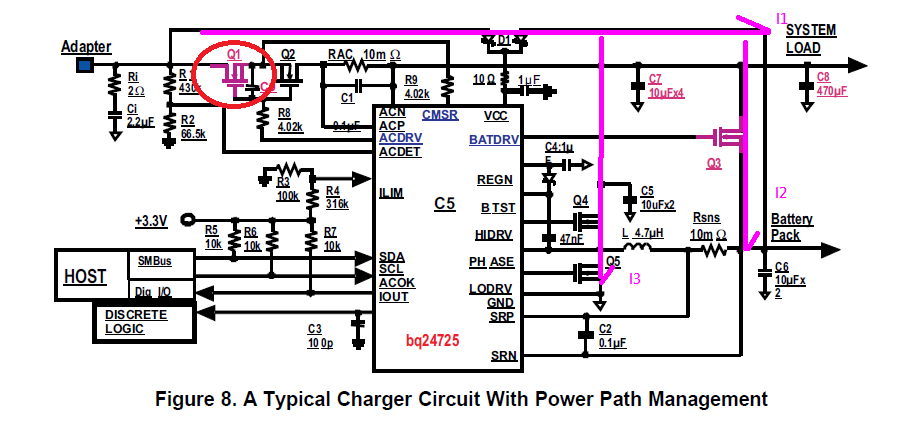Hi Team,
My customer uses several bq24725a on their board.
They found the ACFET get burned during start-up in some of them.
After capturing the waveform of ACDRV, CMSR, Vin and the current of Q1, they observed the Vin drops before the inrush current occurs.
This will induce up to 50A inrush current and get Q1 burned.
Is it possible the wrong parameter of ACFET like lower vth or high gain (Ids vs vgs) causes the short through during start-up?
For now, it seems that after replacing the ACFET with lower gain one, the waveform is back to normal and the inrush current is reduced to 7A.
It's kind of you give us some directions.
Thanks
Sincerely,
Edward

